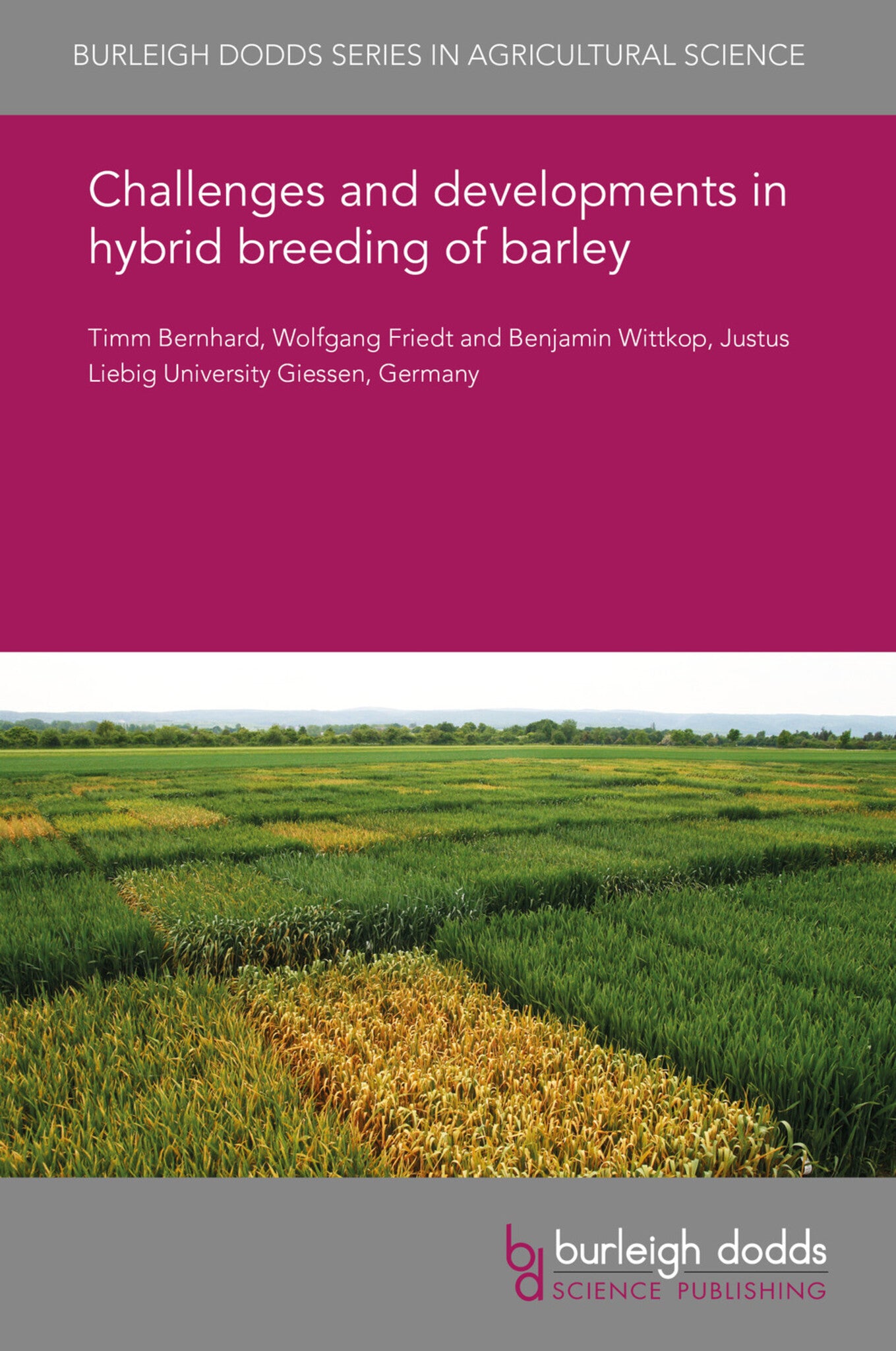We're sorry. An error has occurred
Please cancel or retry.
Challenges and developments in hybrid breeding of barley

Some error occured while loading the Quick View. Please close the Quick View and try reloading the page.
Couldn't load pickup availability
- Format:
-
27 June 2019


TECHNOLOGY & ENGINEERING / Agriculture / Sustainable Agriculture, Agronomy and crop production, TECHNOLOGY & ENGINEERING / Agriculture / Agronomy / Crop Science, Sustainable agriculture

1 Introduction 2 Heterosis in barley and its potential for yield enhancement 3 The potential of hybrid breeding in winter barley 4 Broadening the genetic basis for heterosis in winter barley 5 The cytoplasmic male sterility system for hybrid seed production in barley 6 Environmental and genetic effects on the stability of cytoplasmic male sterility 7 Future trends and conclusion 8 Where to look for further information 9 References



